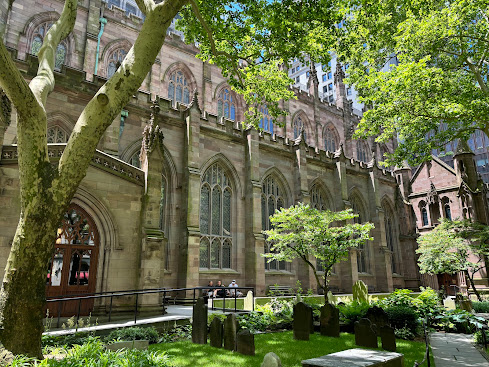It started about 25-30 years ago when we purchased this book.
This book was our Bible back then as we made the goal to visit every presidential grave site. This was back in the days before the internet so without this book, it would have been difficult to find the sites. But over the years we made it to all of them, most recently Teddy Roosevelt the day before, but we had ONE more.
You guessed it. It seemed only fitting that the book that started our quest ended up being our last presidential grave site visit.
So we got in an Uber and our competent driver drove us there and even offered to wait for us. But being unsure how long our visit would be, we sent him on his way. We were feeling pretty adventurous by this point in the day.
In his will Grant had indicated that he wished to be interred in St. Louis, Missouri, or Galena, Illinois, (we were there in 2022) where his family owned plots in local cemeteries, or in New York City, where he had lived in his final years. A friend said he had previously expressed a desire to be buried at the Old Soldier's Home in Washington, D.C. or at West Point, but because he wanted his wife interred next to him, and military cemeteries did not permit women to be interred, he decided against that. The Grant family decided against burying him at Galena because that site was not easily accessible.
After Grant died, there were many calls for a monument honoring him. On the day of his death, the mayor of New York City, William Russell Grave, sent a telegram to Julia offering New York City as the burial ground for both Grants. He gave Julia a list of city parks where her husband could be buried and she agreed to have her husband's remains interred in New York City.
City officials initially planned to bury Grant in Central Park, and the Grant family examined three sites in the park. However, general public greatly opposed the plans and the Grant family believed the sites in Central Park were too small to fit both Ulysses and Julia. The family then considered another site in Riverside Park on the Upper West Side. Though the site was undeveloped, many local businessmen and politicians endorsed the park as the Grants' burial site.
The National Park Service took over the operations of Grant's Tomb in 1959 and the structure was officially renamed the General Grant National Memorial. Thomas Pitkin, the tomb's newly appointed historian, wanted to renovate Grant's Tomb to emphasize its role as a memorial rather than a tomb.
There was some sort of dance exhibition outside during our visit but there was virtually no one inside.
The main room is topped by a circular dome with coffers. The dome measures 40 feet across and is surrounded by a balcony or gallery.
There is a double staircase that descends to the crypt, which is at ground level. Ulysses and Julia Grant are placed in identical separate red-granite sarcophagi placed side by side beneath the center of the dome.
The outer wall of the crypt is divided into square piers. On the wall are five niches with busts depicting Union generals in the Civil War.
James B. McPherson
Another interesting item on display.
So with all that, I'm sure you're wondering the answer to the question "Who's Buried in Grant's Tomb?" Seems obvious, doesn't it? Ulysses S. Grant and his wife, Julia.
But the answer is really......NO ONE. As the sarcophagi are situated above-ground, there is no body "buried" in Grant's tomb.
And that completed our day...and our quest to see every presidential gravesite.





































































